


Lower Lawrenceville packs more destination dining into a small space than any other neighborhood in Pittsburgh.
The Sixth Ward is less than half a square mile in area, yet is home to a bevy of outstanding eateries and bars ranging from ultra-casual to high-end, with most of them packed nose-to-nose along a six-block stretch of Butler Street.
“I can’t imagine being anywhere else. It’s one of the most walkable neighborhoods in the city,” says Neil Blazin, owner of Driftwood Oven.
[If you want to continue your walk, our Eat Pittsburgh: Central and Upper Lawrenceville guides you to more additional establishments along Butler Street.]
Lower Lawrenceville as a culinary hub is a relatively new phenomenon, with most of its boom happening in the past decade or so. Indeed, few vestiges of the neighborhood’s blue-collar roots remain, with the nearly 90-year-old Frankie’s Extra Long the lone representative of a bygone era. As it’s always been, the lunch counter and daytime bar is a perfect spot for a kielbasa or meatball sandwich.
Although shifts in neighborhood demographics can be a knotty issue that calls for layered discussions about affordable housing, the boom in eating and drinking establishments in what formerly were vacant or dilapidated storefronts in Lower Lawrenceville is by and large viewed as a positive development.
“It’s been great to see, little by little, how the neighborhood has grown,” says Domenic Branduzzi, owner of Piccolo Forno. “We all flourish as new places open in a neighborhood like this.”
There are lovely daytime options, such as Lola’s Eatery and the co-working space Field Day’s bottom-floor cafe, which offers excellent sandwiches. Espresso a Mano, one of Pittsburgh's first third-wave coffee shops, is a prime spot to begin the day or pop in for a pick-me-up (and, with no public WiFi, offers a blissful alternative to remote work coffee shops).
Two of Pittsburgh’s great (and contrasting) drinking destinations are off the main drag. Arsenal Cider House’s flagship location sits in a beautifully restored home on 39th Street and features a sprawling lawn where you can often catch live music on the weekends. Steps away is Take A Break Bar, a haunt popular with hospitality industry workers. It makes a strong case for the best dive bar in Pittsburgh.
The following restaurants, listed in order of opening, capture the crux of Lower Lawrenceville dining right now. (Another of our favorites, Poulet Bleu, remains closed following damage from catastrophic flooding earlier this year.) These are their stories and a guide to what you should eat while dining here.
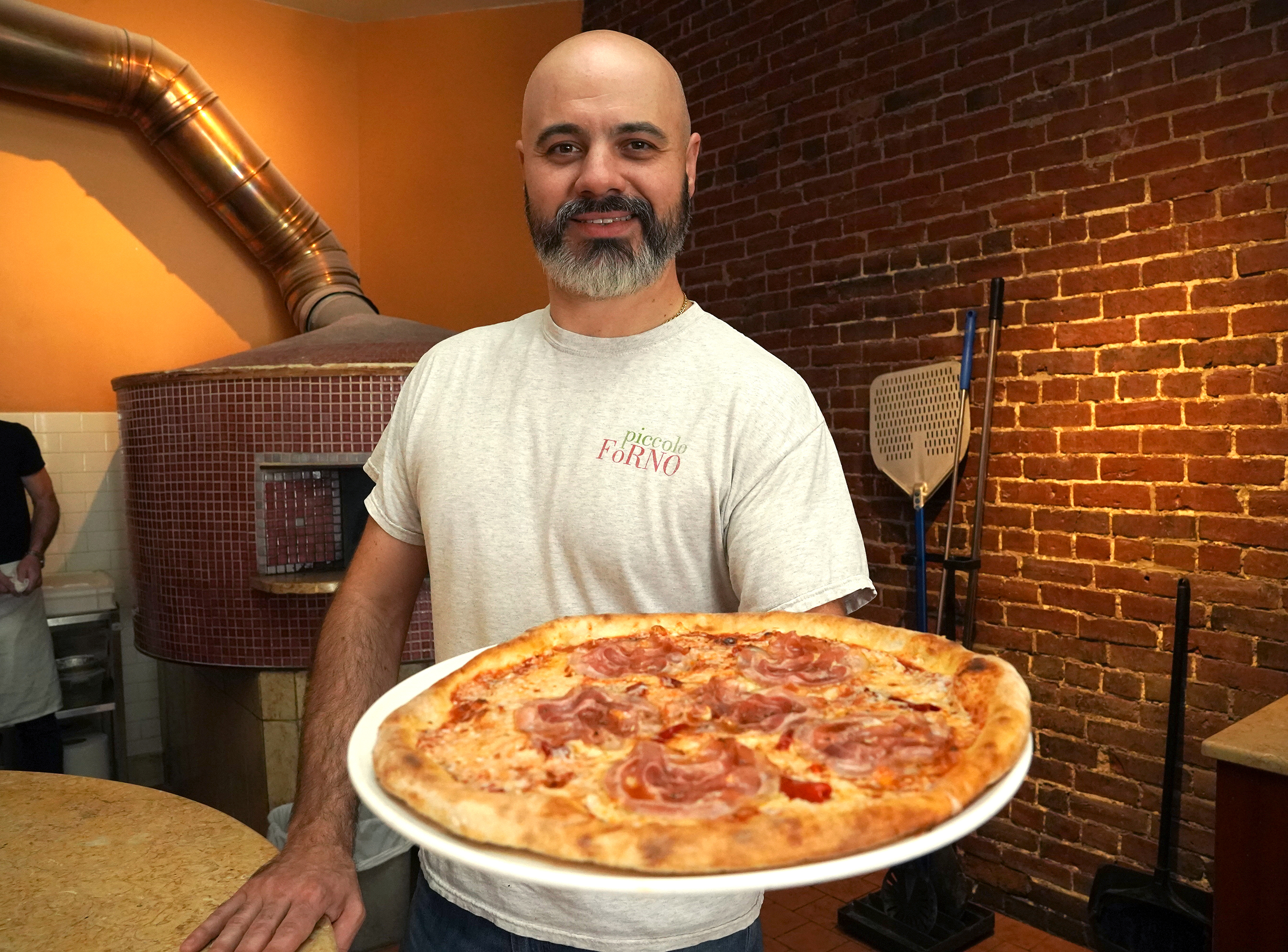
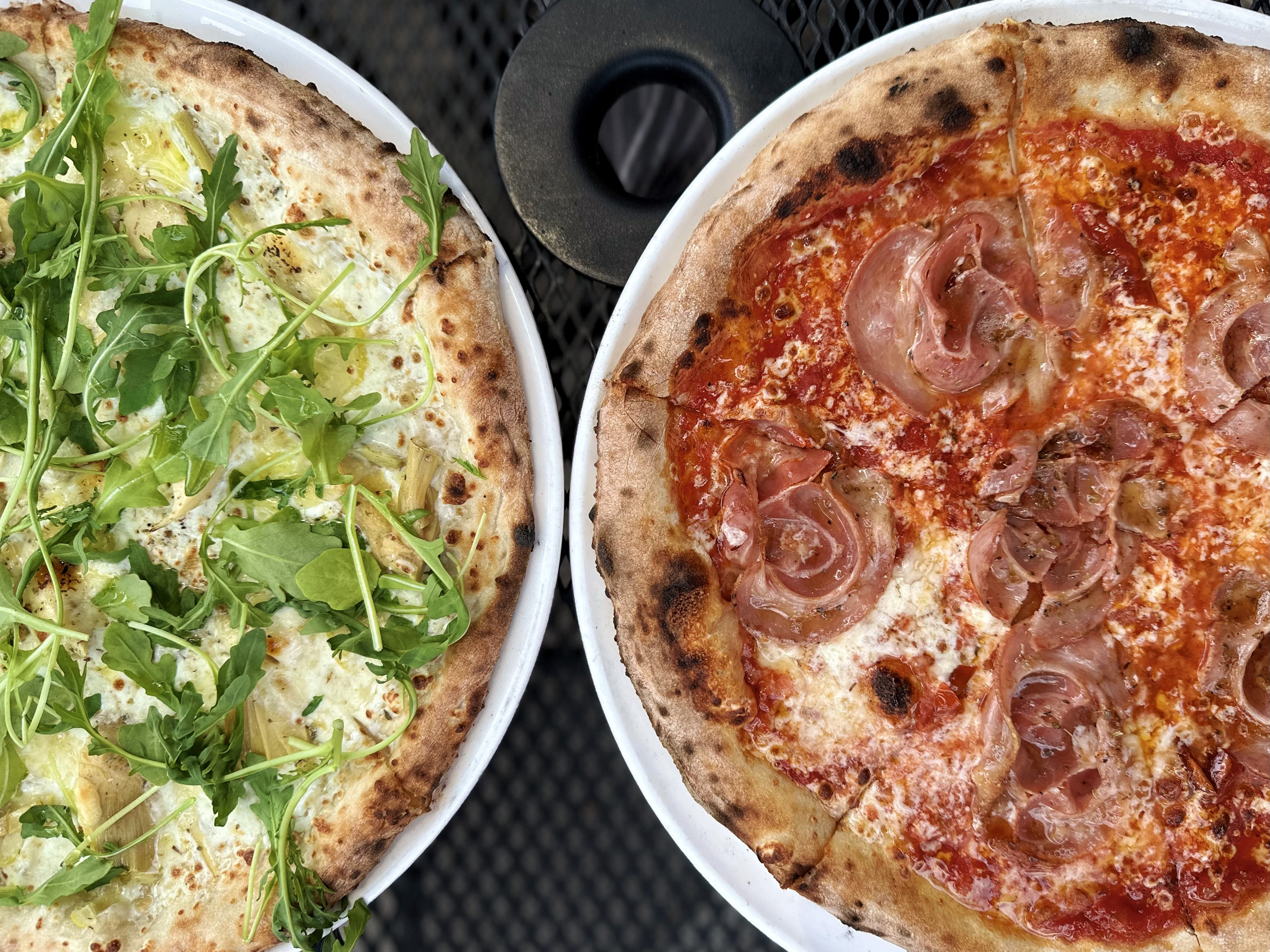
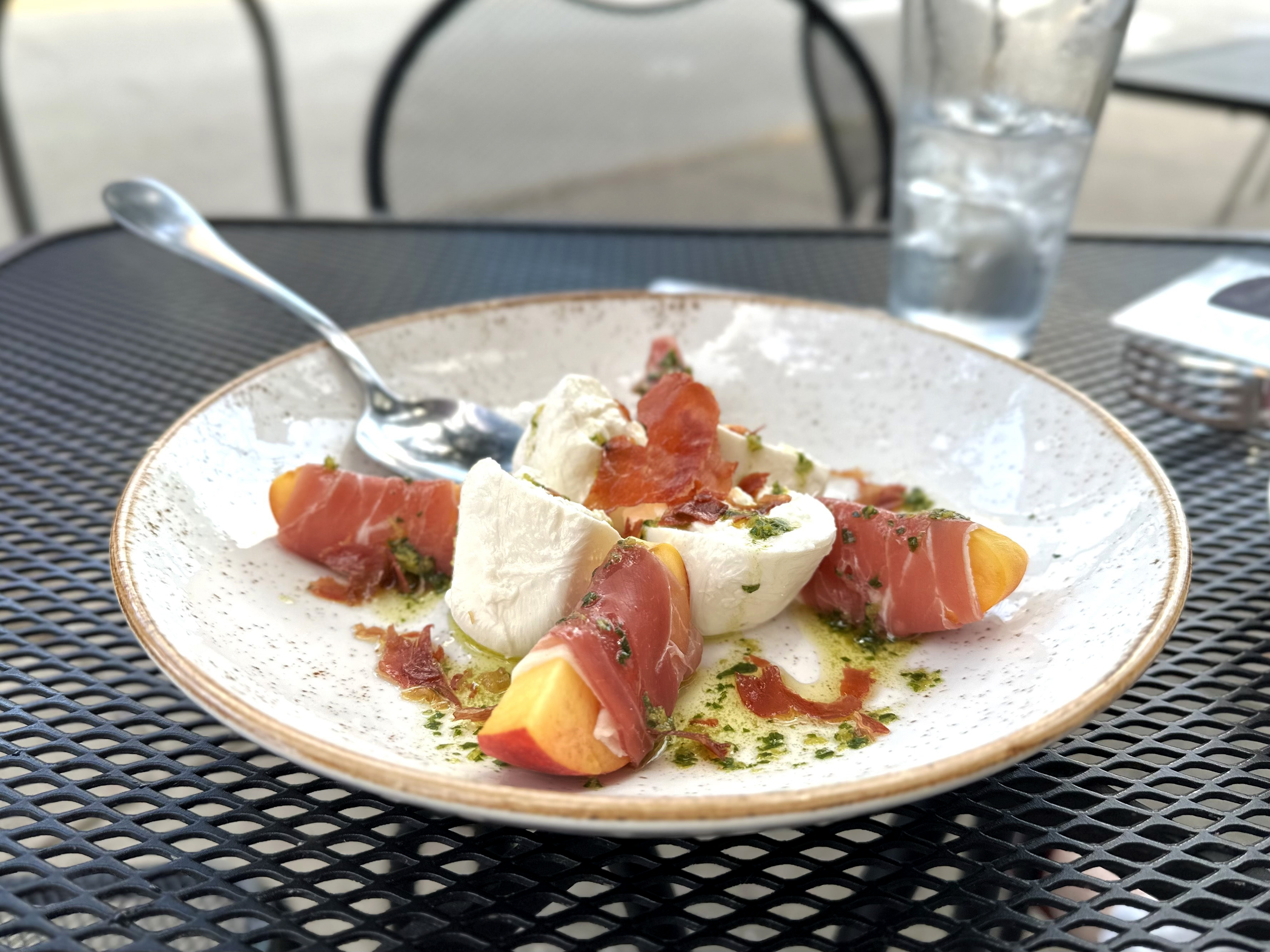


The birth of Lower Lawrenceville as a contemporary dining destination began with the 2005 opening of Piccolo Forno.
“It’s a cooking ethos, a mantra. I want to cook simple, good food. That’s what I come back to,” owner Domenic Branduzzi says of his BYOB Italian eatery.
Branduzzi is a lifelong fixture in Pittsburgh’s culinary world. His parents, Antonio and Carla, ran a bakery called Il Piccolo Forno in the Strip District from 1992 until Antonio died in 2007.
Branduzzi worked there when he was a kid, roasted coffee at Pittsburgh’s pioneering coffee roaster La Prima and then took a job at Regina Margherita, the trailblazing pizzeria once located in the historic building where Piccolo Forno now resides. (Regina Margherita’s owner, legendary pizzaiolo Roberto Caporuscio, took his craft to New York City and now runs Keste.)
Branduzzi was just 22 when he purchased the restaurant, preparing the thin, crispy style of pizza prominent in Tuscany, where he was born and his family still has roots. His mother took charge of the rest of the early menu. She’s stepped back from the day-to-day operations, but still assists in preparing pasta for the restaurant.
“I always knew the core of what we wanted to do. Obviously, pizza with the oven we had. Then pasta. Then a menu loosely centered around my Tuscan roots but not staying totally in that box,” he says.
Piccolo Forno can be loud and crowded, and that’s part of its charm. It’s famously BYOB (corkage is $7 per bottle), but guests can now order bottles from Branduzzi’s charming wine, cocktail and aperitif bar, Grapperia. It’s a fun spot for a pre-or post-meal drink, too.
It’s a good idea to make a reservation, which, in a throwback worthy of Piccolo Forno’s old-school roots, is made by phone only.
The order: Start with a couple of Piccolo Forno’s pizzas. The dough has a dependable structure and bite, and the judicious application of toppings allows each element to shine. The permutations lean very Italian, with offerings such as carciofi (white pie with lemon, artichokes, fresh mozzarella and fontina, oregano, arugula, olive oil citrus drizzle), mortadella e pistacchio (pistachio pesto, fresh mozzarella, basil, mortadella, burrata) and speck e mascarpone (crushed tomatoes, fresh mozzarella, mascarpone cheese, speck).
The restaurant’s scratch-made pasta dishes are equally as enticing. Ravioli stuffed with spinach and drizzled with lemon-and-sage compound butter and shaved grana padano cheese marries the chew of the pasta and the bright grassiness of spinach. Piccolo Forno’s lasagna is classically excellent, with layers of beef Bolognese, bechamel and romano spread between sheets of crepes.
Look for (and order) seasonal specials such as roasted corn and spaghetti with roasted red peppers, arugula and smoked scamorza and peach risotto with shallots, chevre and walnut basil-mint pesto.
“Every time I go to Italy I feel like I might be searching for inspiration or new ideas. That never happens,” Branduzzi says. “What I really come back with is remembering the beauty and the simplicity of the way they cook there. They’re not looking to recreate the wheel there. They take ingredients that are in season and do what they can to respect them and let them shine. That’s Italian cooking and that’s what I try to do.”
3801 Butler St., piccolo-forno.com
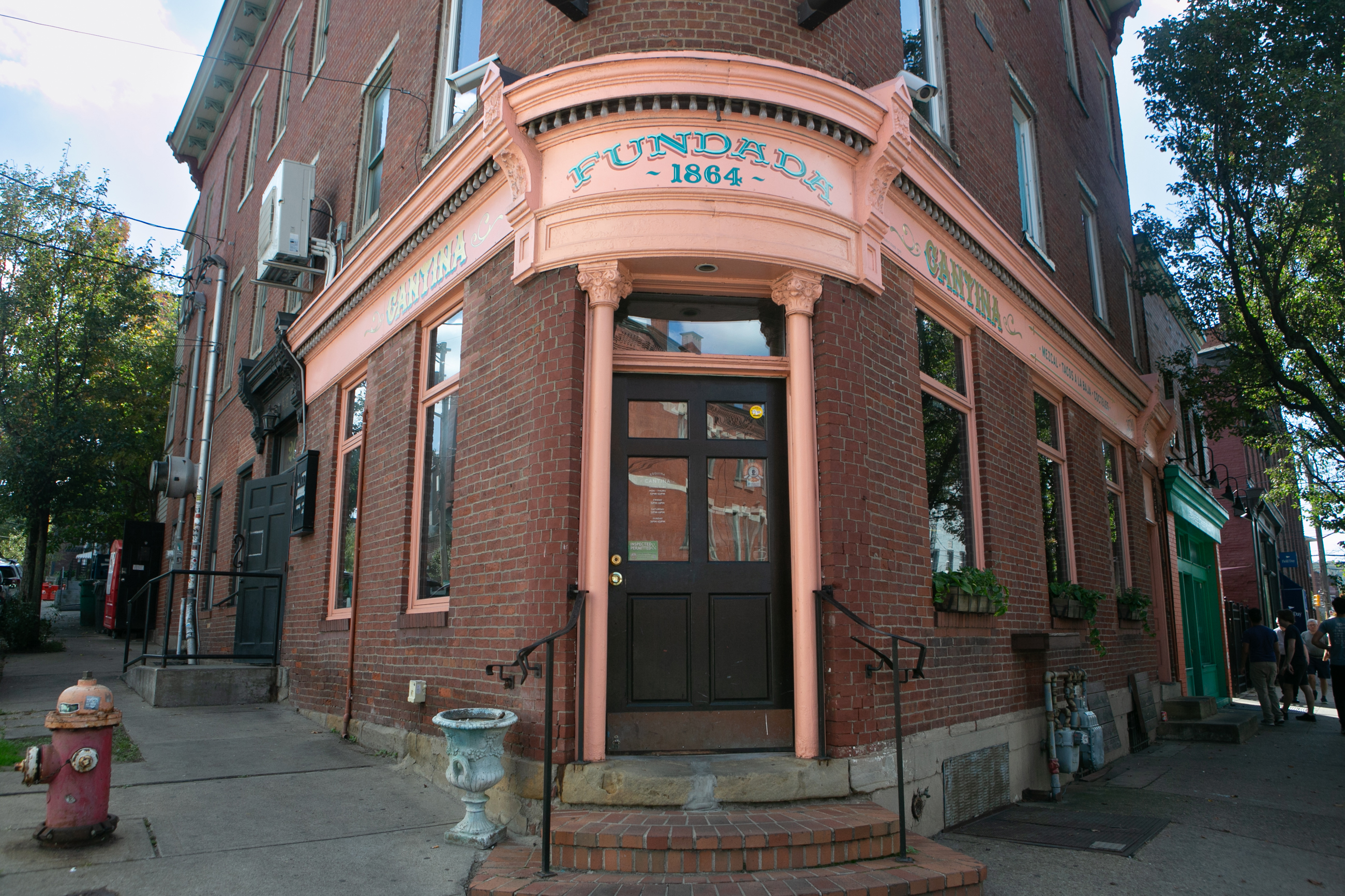
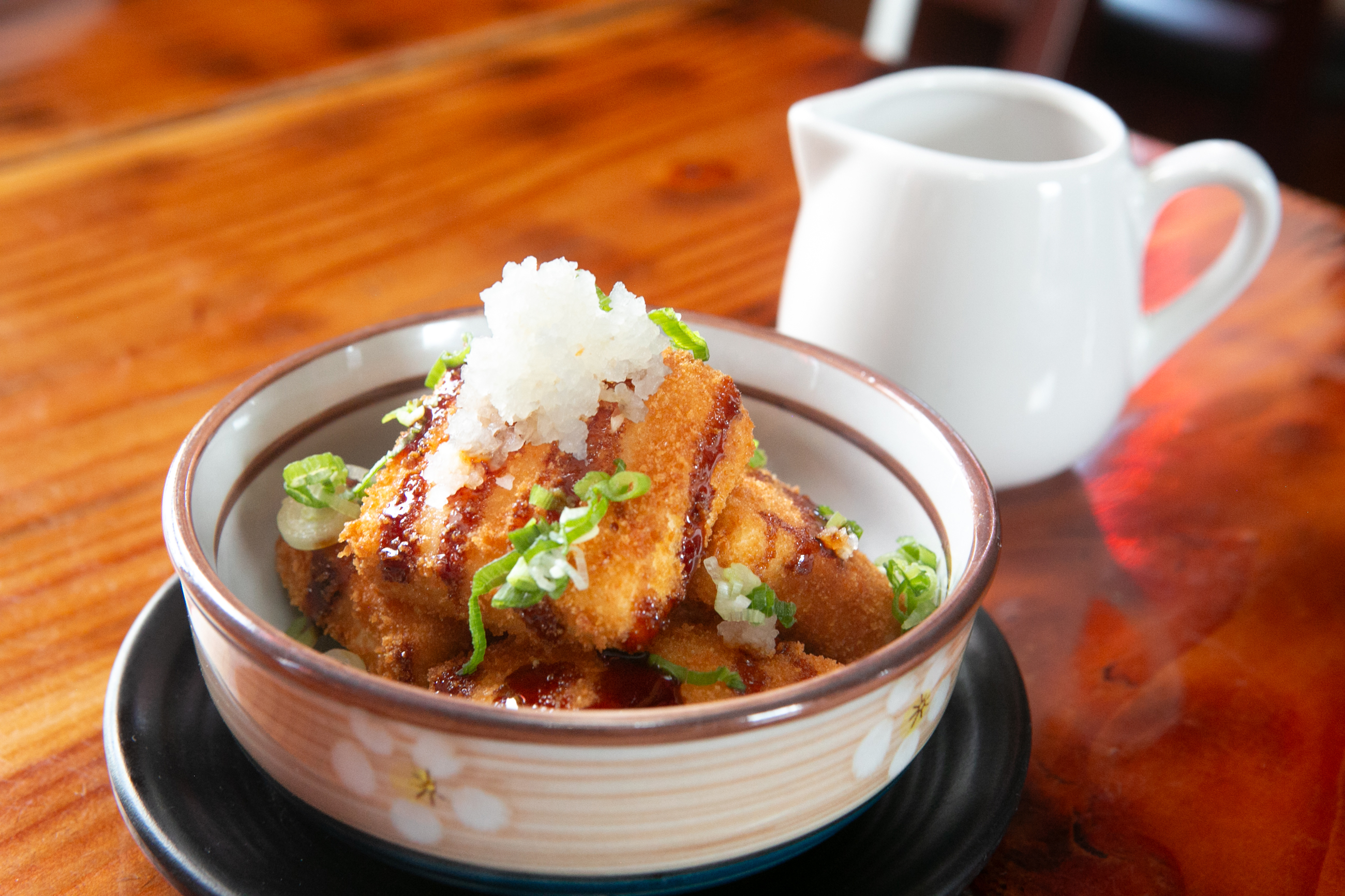
The historic Round Corner building on Butler and 38th streets is home to two of the neighborhood’s primary destinations combining a fun, sometimes rowdy, night out with tasty bites. The 1864-built building served as a local watering hole for nearly all of its history and operated as Sufak’s Round Corner Hotel for 28 years when Derek Burnell purchased it in 2008.
Burnell opened Round Corner Cantina (renamed Equina Cantina in April) in 2009. The sprawling first floor of the building, with its saloon-like front bar, intimate back room and sizable rear patio, quickly became a central point for gatherings, first dates and, at times, wild karaoke nights. Burnell kept improving the space over the years, building a comfortable, weather-proof pergola on the patio that’s perfect for private parties or a good hang.
In 2021, Julio Peraza came in to refine the offerings and build a menu based on imported heirloom corn and roots Mexican cuisine. Peraza left in 2022 to pursue a project in Sewickley, but his influence lingers.
In 2016, Roger Li, who brought Asian-fusion dining to Lower Lawrenceville as chef of now-closed Tamari, partnered with Burnell to open Umami on the third floor of the building. The moodily lit Izakaya is designed to capture the spirit of an intimate, often boisterous Japanese pub where you can throw back sake and whisky while snacking on seafood and grilled meats. It’s also a nice spot for dinner.
On the second floor, Li says his long-anticipated 12-seat omakase counter is ready to go as soon as he can staff up his other establishments (Parlor Dim Sum and Cantonese BBQ and Nanban).
The order: You aim to crush as many corn-based dishes as possible at Esquina Cantina. An order of sopes — medium thick masa cakes topped with chicken tinga, duck fat refried black beans, queso fresco, pickled carrot, cilantro, crema and salsa jalapeño — is a good place to get a sense of what is offered here. Esquina serves a selection of 10-ish tacos in scratch-made tortillas. Beef birria, lush with quesabirria, onion, radish, lime, consommé, salsa de árbol and cilantro, stands out among them.
The establishment is a primo spot for vegetarian and vegan eaters, as many dishes are or can be prepared without animal products. Those with celiac disease and other gluten-related dietary sensitivities will also find much to love in the corn-forward menu – almost every dish is gluten-free.
The drinks are excellent, especially the exceptionally deep mezcal and tequila list.
At Umami, the name of the game is sharing. Most bites come as small plates, so there’s plenty of opportunity to gather around the table for a good time with your pals.
While on the pricier end of the spectrum for Pittsburgh, the nigiri and sashimi at Umami are well-executed and fresh fish comes in nearly every day. Look for daily and weekly specials.
The menu’s heart, however, is the robatayaki grill. Go for charcoal-grilled meats such as luscious pork belly, tender chicken thigh and buttery salmon, or go wild with a whole fish.
Umami offers some prime-time bar snacks such as how-did-I-eat-this-much karaage, takoyaki (fried octopus balls with kewpie mayonnaise) and agedashi tofu, a comforting crispy tofu in a ginger-infused dashi.
Umami’s bar program has always been one of the strongest in Pittsburgh. There’s a terrific list of Japanese whisky and other spirits, such as a surprisingly good barley shochu. Getting deep with sake in Pennsylvania is tough, but Li does his best.
3720 Butler St.; iluvcantina.com
202 38th St. (3rd floor); umamipgh.com


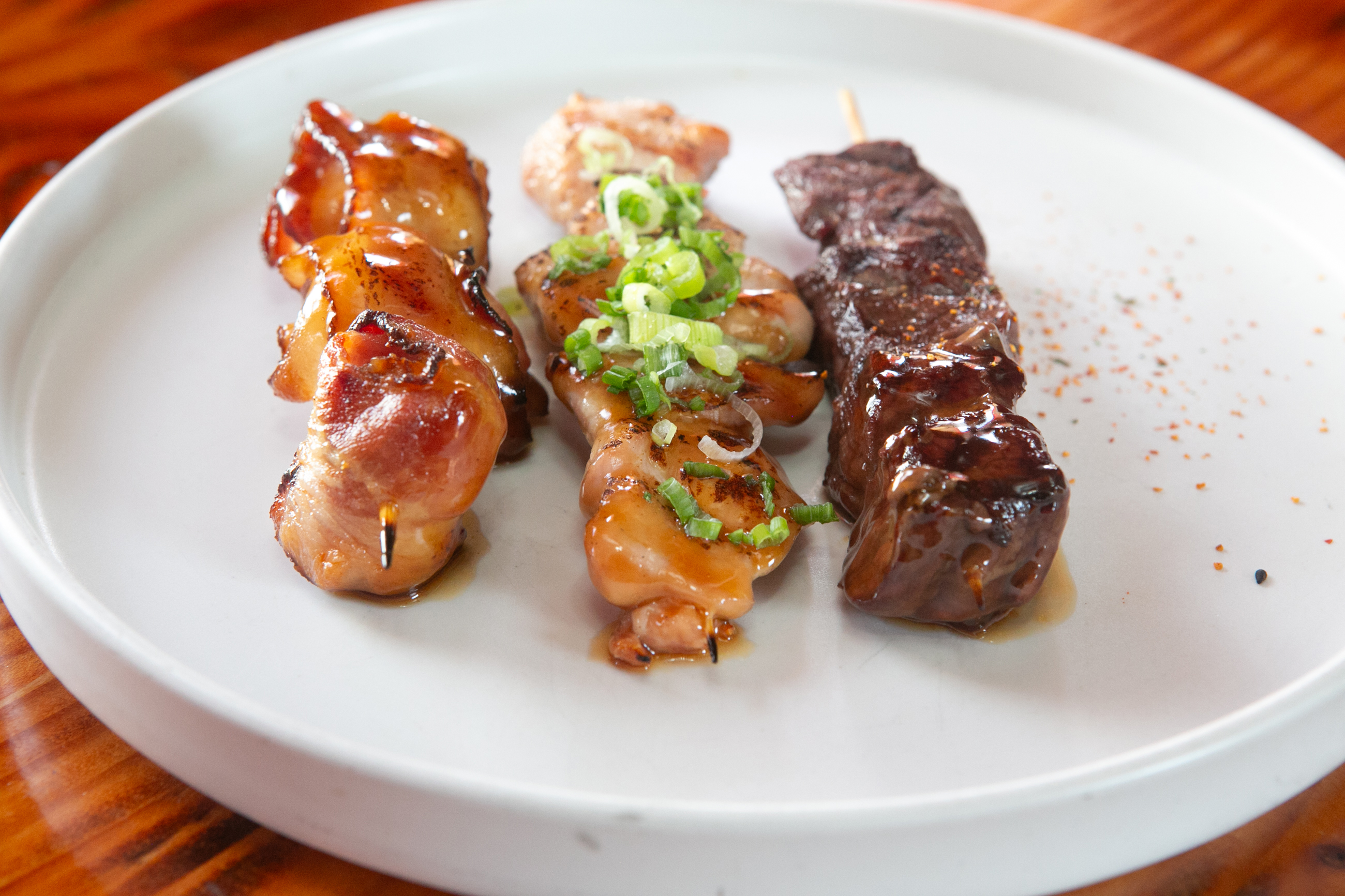
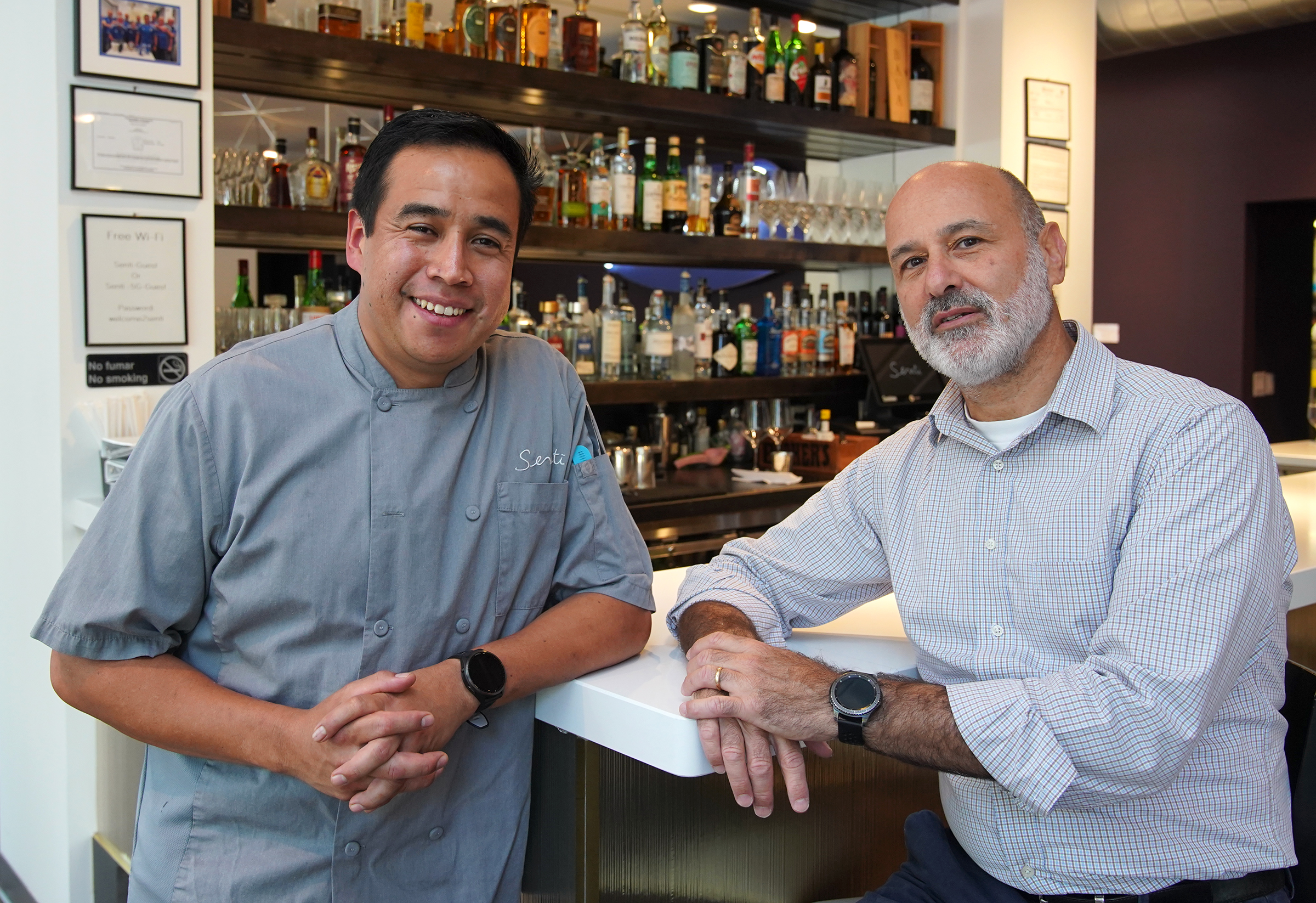
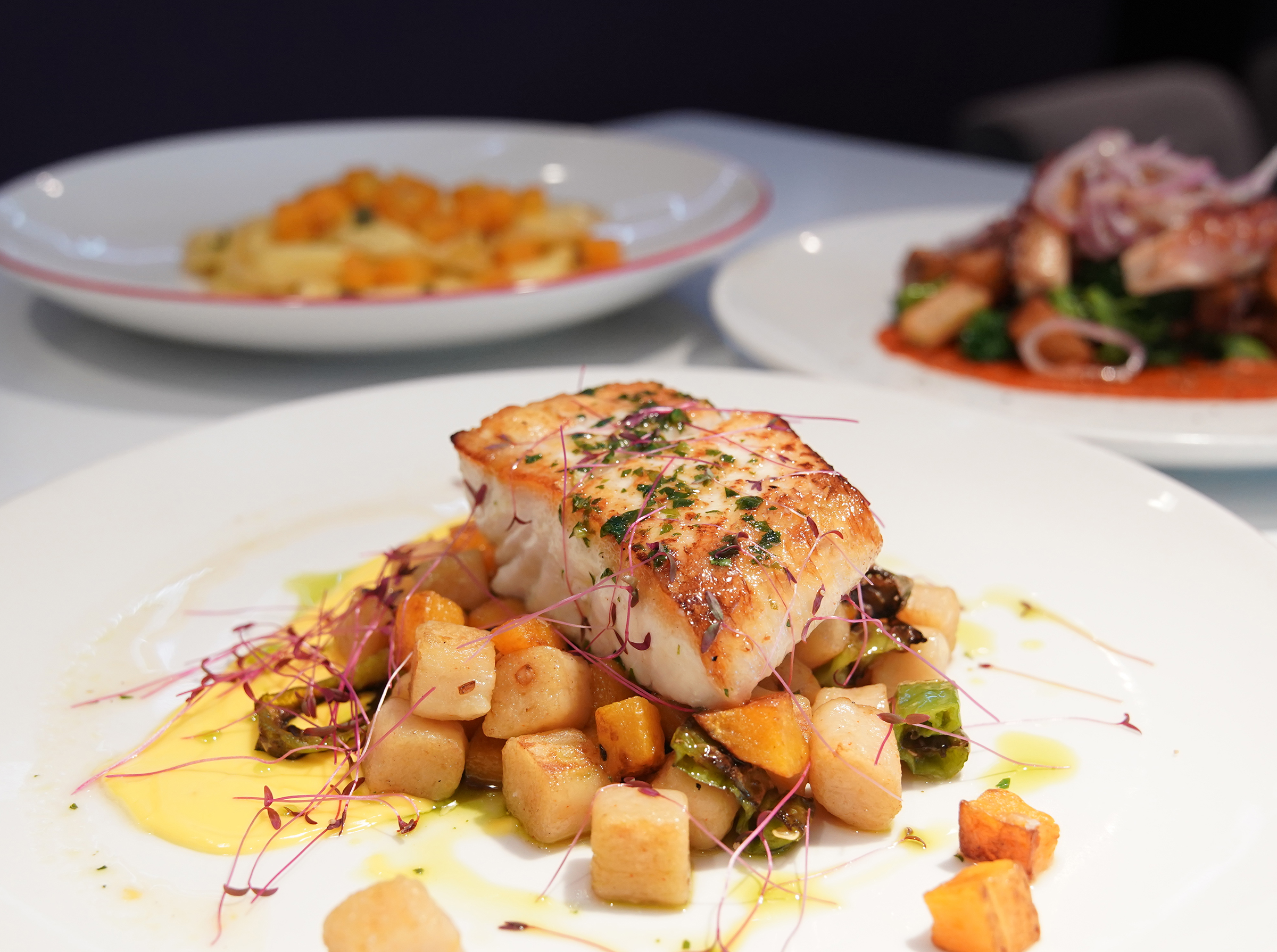
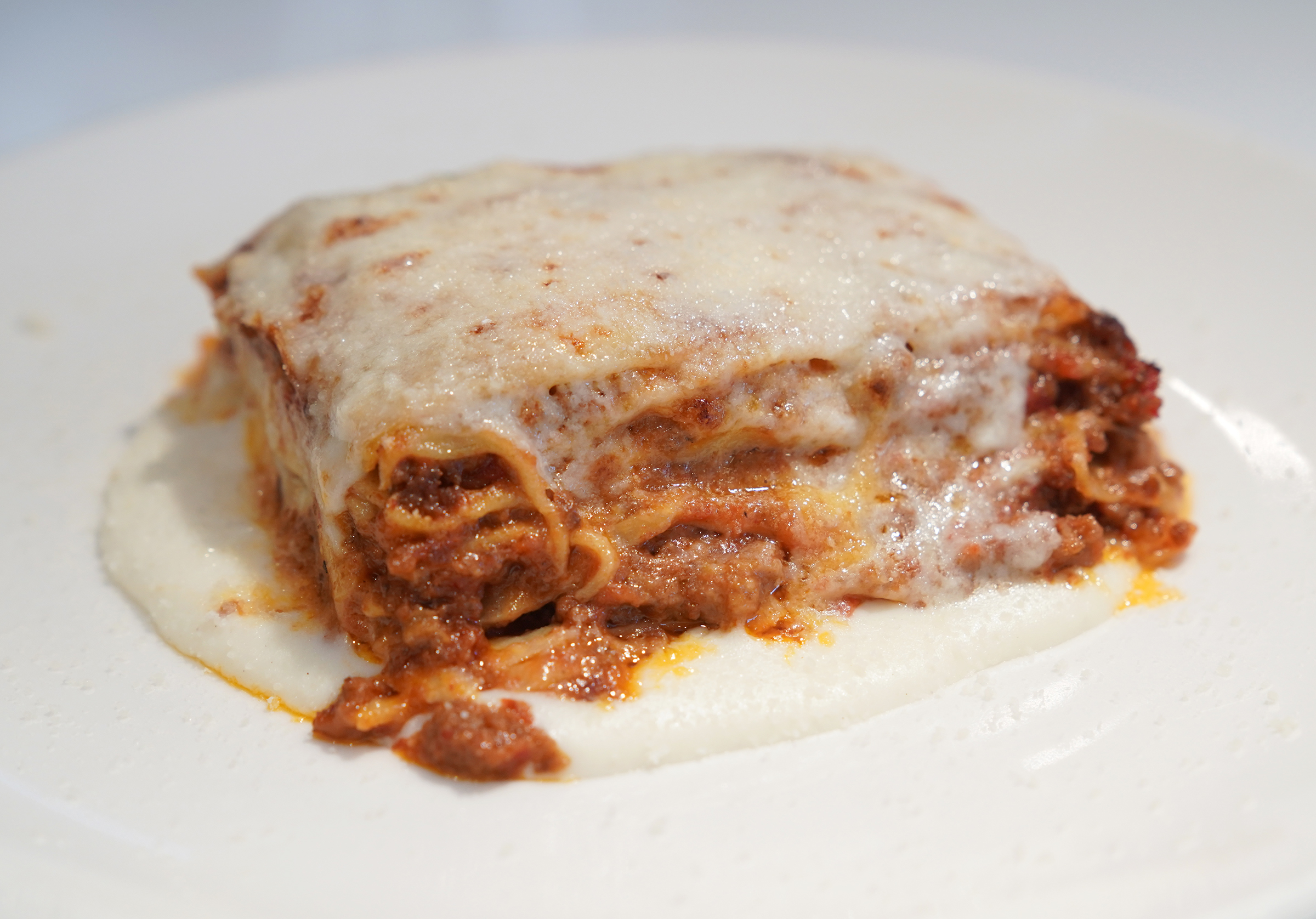


Hospitality is front-and-center at Senti. Owner Franco Braccia is one of Pittsburgh’s most experienced front-of-house operators, and his wise charm is evident during every visit to Senti.
Abruzzo, Italy-born Braccia spent 35 years in the hospitality industry (most notably as the general manager of Lidia’s Pittsburgh) prior to opening Senti with his wife, Annette Ishida, in 2015.
What they offer is an upscale experience that recalls an earlier era of dining where a level of refinement wasn’t just welcome, it was expected. It’s an essential piece of a well-rounded restaurant ecosystem, especially in the post-COVID era where fast-casual and easygoing service is the norm. It’s even more essential to have establishments such as Senti that understand this type of dining need not be stuffy or demand a theater of subservience from its staff.
“It’s not about the white tablecloth, it’s about how to educate the new generation about how to enjoy a full-service restaurant,” Braccia says. “We have more people from younger generations coming in for an easy night out.”
Of course, none of this would matter if the food isn’t terrific. Executive chef Antonio Garcia and his team deliver strongly on that front.
The order: Senti offers a concise menu of Italian dishes, most tilted toward the north of the gastronomic paradise. It’s a nice mix of longstanding popular dishes such as gorgeous lasagna alla Veneta – Venetian-style lasagna with layers of crepes, beef ragu and béchamel – and a spaghetti al pomodoro with a flavor punch that belies its simplicity. All pasta is made in-house. Love clams? You’ll feel joyous ordering linguine con vongole.
Look for seasonal dishes, too. A summertime ravioli dish was packed with pungent taleggio cheese and finished with brown butter sage sauce and a riblet of corn. In early spring, Agnolotti di vitello, wondrous dumplings stuffed with veal and herbs, swam in a bright veal and sage broth. Starters such as arancini change, too. The crispy rice balls might come con piselli – with peas and grana Padano over red pepper cream sauce in spring and as cacio e pepe with pecorino cheese, pink pepper, corn and béchamel sauce in high summer.
There are always a few (between two and four) main courses, and I’ve rarely had one executed without precision. Getting the fish of the day is always a smart decision: An August branzino shined with gorgeous cherry tomatoes, perfectly cooked potatoes and lovely greens.
Senti’s wine list leans heavily toward Italy, with a touch of flavor from California and France. It’s one of Pittsburgh’s very, very (very) best.
“I’m intrigued by new experiences, too. They’re even starting to make good wine in England. I’m interested. We need a more open way to import this wine,” Braccia says.
The restaurant’s enomatic wine machine allows for by-the-glass pours of exclusive wines that typically are only sold by the bottle. Braccia and his staff are also well-versed in finding the right pairing for your dishes.
3473 Butler St.; sentiresaurant.com
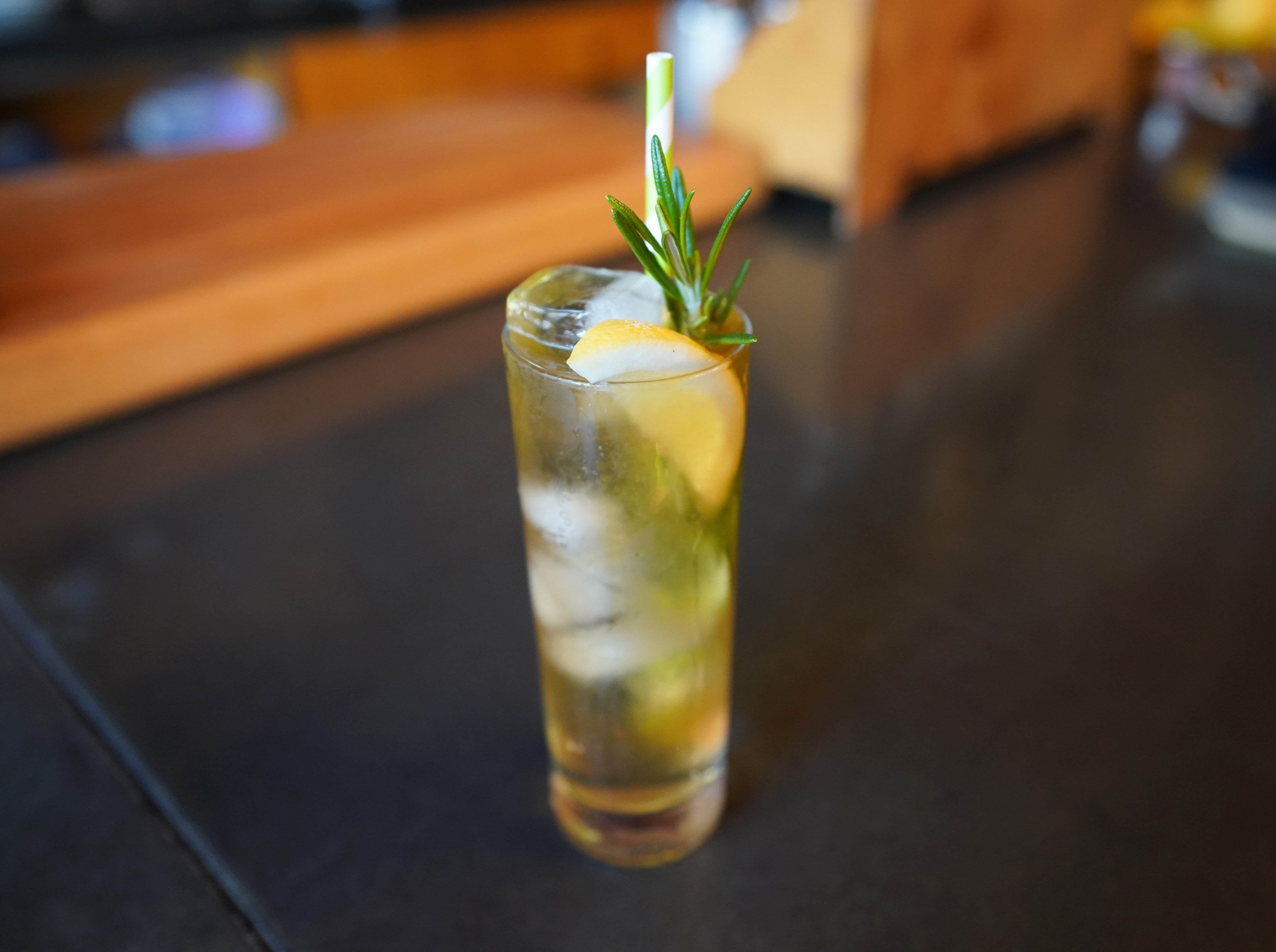
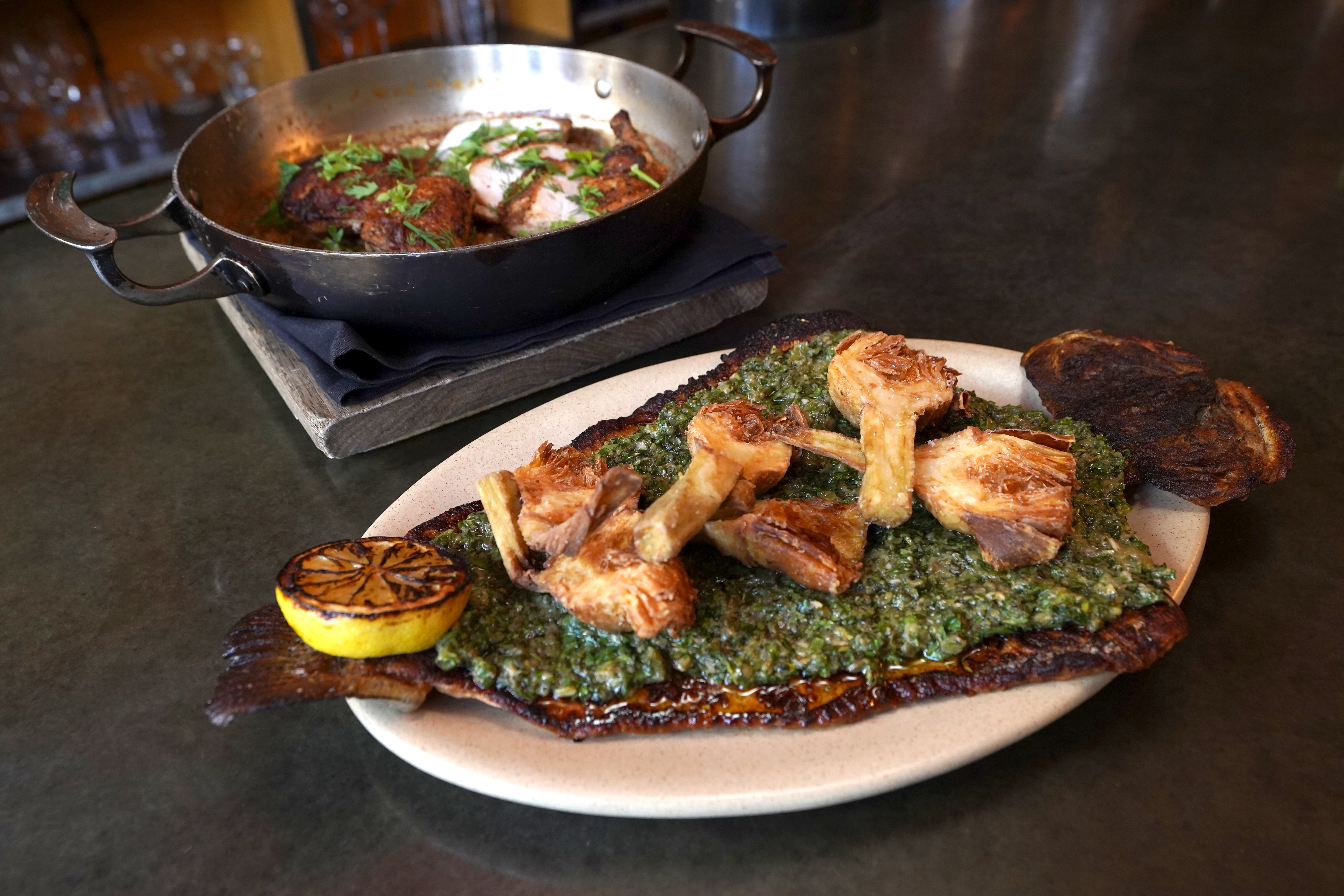
Morcilla, Justin Severino and Hilary Prescott-Severino’s follow-up to their much-lauded restaurant Cure, was a smash hit from the minute they opened it at the end of 2015. It continues to dazzle today.
Bon Appétit magazine named Morcilla one of its “Hot 10” restaurants in the country in its 2016 Best New Restaurants issue, and the James Beard Foundation long-listed the Spanish-influenced establishment for its Best New Restaurant award the same year.
The couple enlisted longtime Severino protegee Nate Hobart to run the day-to-day operation as Morcilla’s chef de cuisine.
Hobart is now executive chef and partner in the restaurant, with Severio running the charcuterie business Salty Pork Bits in the USDA-approved processing facility in the building’s basement, as well as a few other projects. Prescott-Severino continues to manage the operational side of the business. (Cure closed in 2019.)
The taverna-style space, designed and built by Severino and Brandon Masi of MitreBox and accented by Sam DiBattista of Vivo Kitchen in Sewickley, manages to mesh high-energy, convivial dining with an ambiance intimate enough for a romantic date. The front bar was initially intended to serve as a stand-up bar, a place you’d pop in for a 4-ounce pour of funky Spanish cider and a couple of snacks before continuing with (or ending) your evening. Now, it’s an extension of the dining room.
“We have a lot of regulars, and a lot of them are loyal customers since the beginning. Those are mostly our guests who come in and spend a few hours having a long meal at the bar,” says Prescott-Severino.
They expanded the dining room back to its original size earlier this year by removing a cooler installed in the back of the room during the pandemic.
“That was huge for us,” Prescott-Severino says. “Eighteen more seats doesn’t sound like a lot but it’s a big amount of preparation.”
Service at Morcilla is among the most attentive in Pittsburgh. Even with the extra seats, the restaurant can be a tough reservation to score, particularly on weekends. Be sure to book in advance online if you have a particular date in mind.
The order: With rare exceptions, Morcilla is a “you really can’t go wrong with whatever you choose” destination.
Hobart’s menu is a mix of seasonal dishes such as peak-season tomato and cucumber salad with labneh, fennel, basil and marcona almond dukkah and longstanding staples such as the utterly crushable costillas de la matanza – tender baby back pork ribs dressed with harissa honey, za’atar and labneh.
Begin the meal with a bunch of shared snacky dishes. You can get a Salty Pork Bits charcuterie spread or a more refined bite that accents the brand’s chorizo with pimentón, dates and vanilla oil. Fried artichoke with anchovy aioli and burnt lemon is always a good choice, as are Hobart’s mussels en escabeche; the summer version with sweet sungold tomatoes was an absolute banger.
While you can (and sometimes should) make a meal with small plates and snacks, Morcilla’s large-format dishes are impressive. Whole Laurel Hill Farm trout, dressed with piquant, herbaceous salsa verde, is a strong contender for the best fish dish in Pittsburgh. Arroz con pitu de caleya — roast chicken in cider, Calasparra rice and herbs — is a poultry lover’s dream come true.
Morcilla’s bar program is outstanding. Longtime bar manager Lynn Thomas offers a spirits-forward cocktail list where every drink is remarkably balanced. There is a bevy of spirits (bless the gin program here) and liqueurs, as well as a terrific sherry and vermouth list. The deep wine list is heavy on imports from Spain.
3519 Butler St., morcillapittsburgh.com


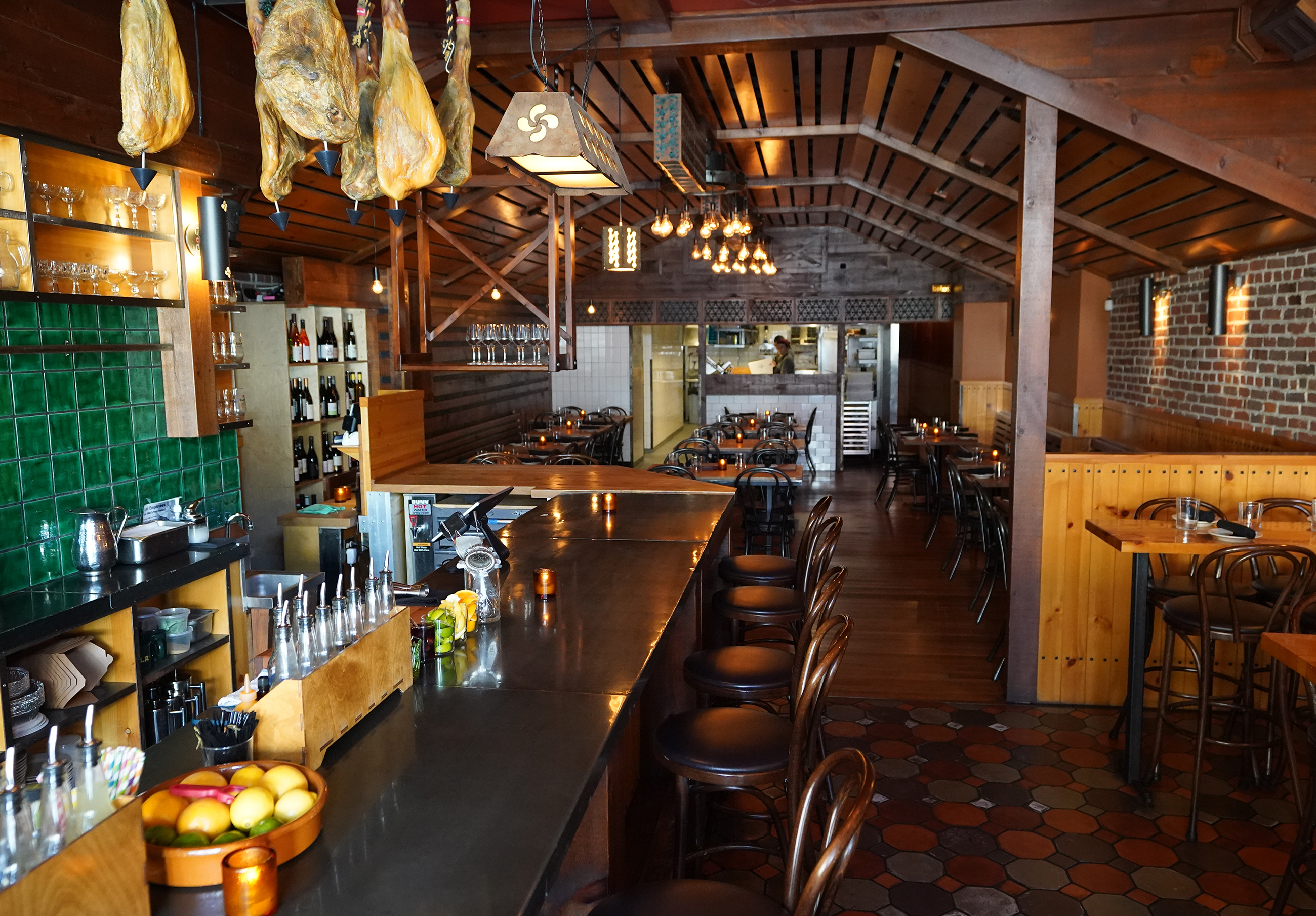
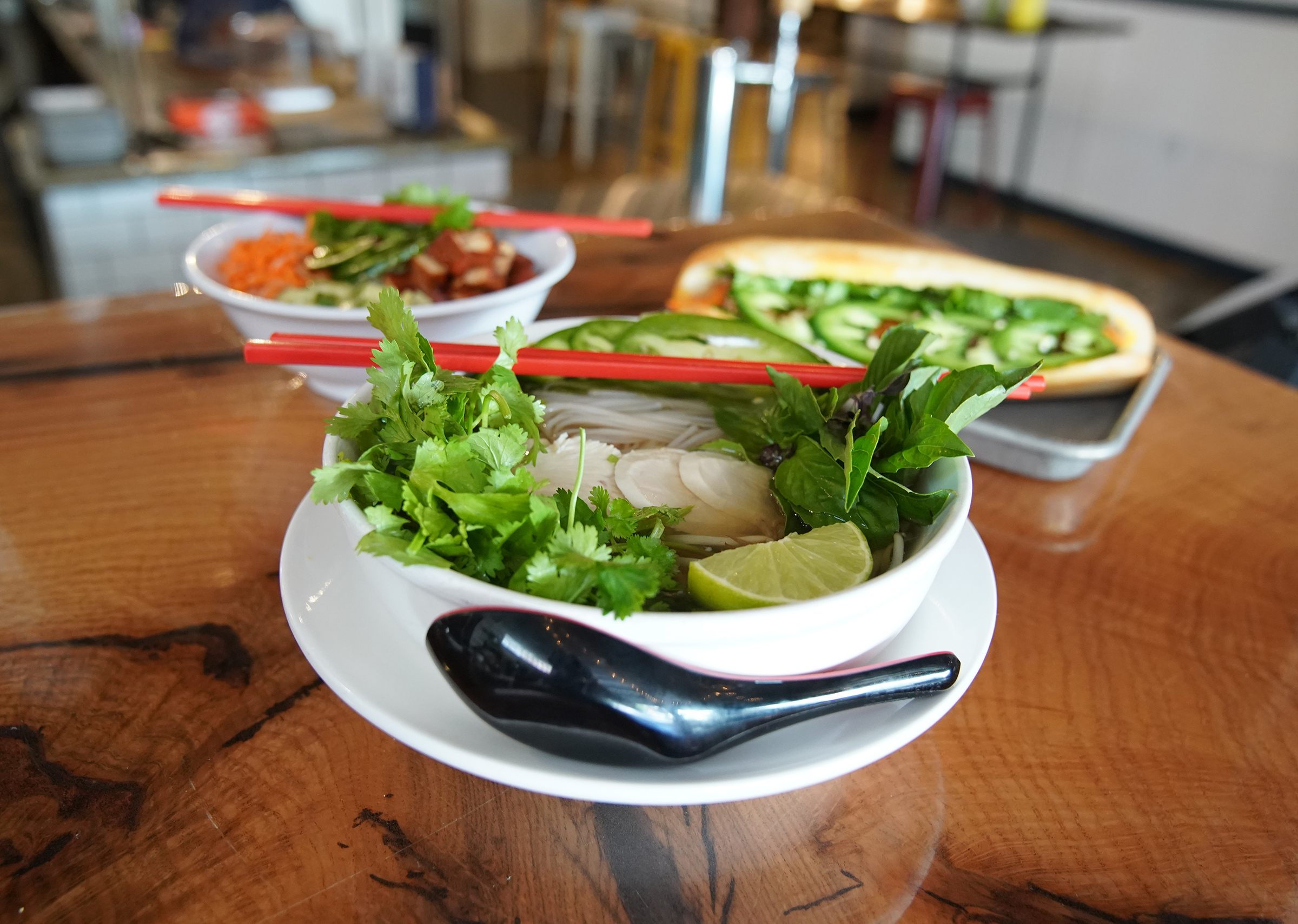
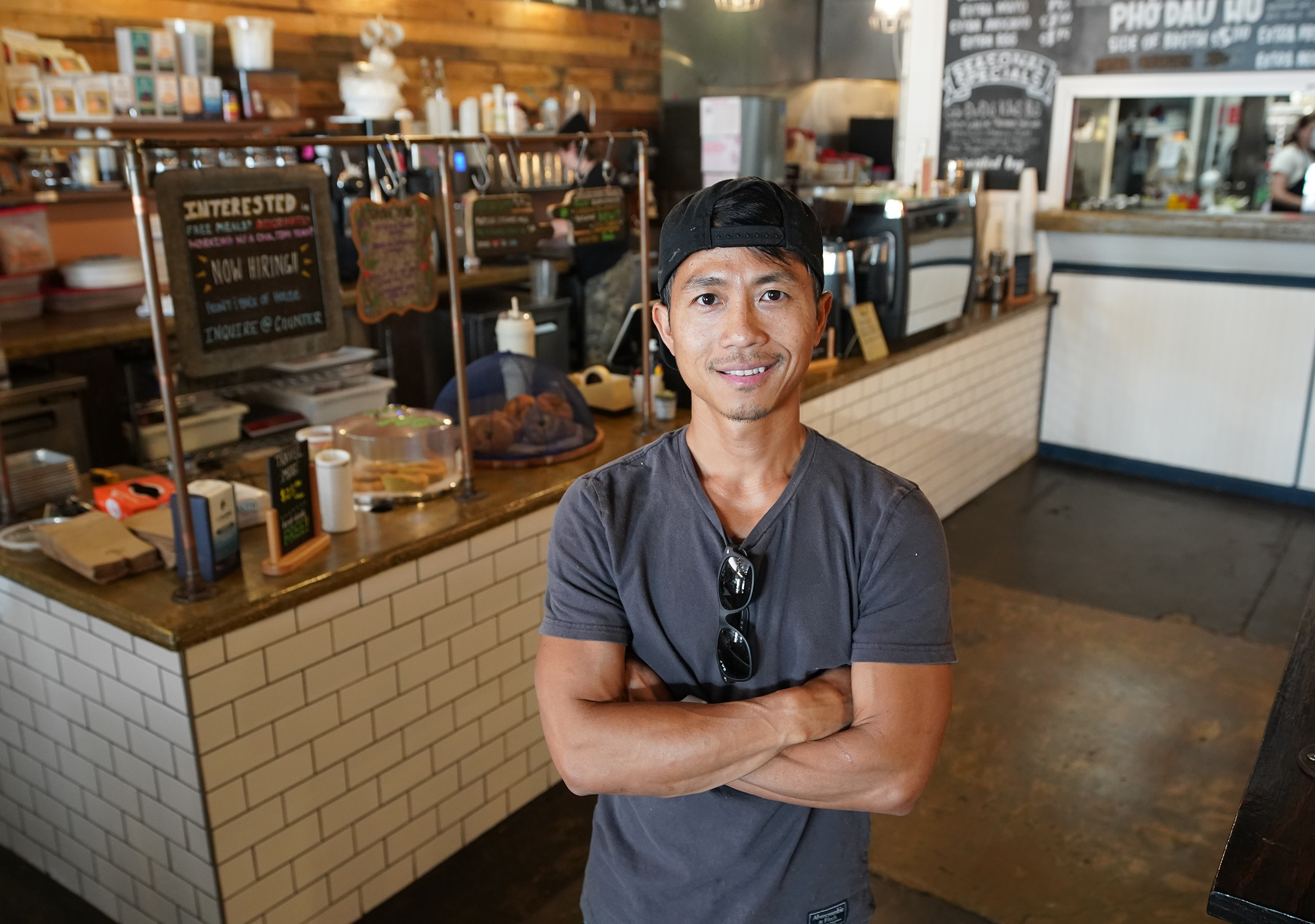



Phat Nguyen left his corporate job to open Ineffable Cà Phê in 2017. He figured he could spend more time with his family if he had the flexibility to control his working hours. Opening Pittsburgh’s first Vietnamese cafe tapped into his gustatory sense memory.
“It’s based on what I grew up with in Vietnam. I’d go with my dad on the way to the cashew farm. He’d get coffee and I would get a banh mi bo duong because it was a poor person’s food,” Nguyen says.
He also wanted to offer a service to the greater community in Pittsburgh when he found a 2,500-square-foot space away from the rest of the hubbub of Lower Lawrenceville.
“I built a place that was big enough that people could come to work and study and not feel like they have to leave because the place is so cramped. Stay as long as you want. There’s food there if you’re hungry and there are plenty of outlets for charging, so you don’t have to go anywhere else,” he says.
His passion translates to a lovely experience. Walls are adorned with barn-style wood with gardens of houseplants and living walls breaking it up. The space, lit with Edison-style bulbs, doesn’t feel cliche or dated. There are giant three-sided booths for group conversations and co-working pods, little nooks with couches and comfortable chairs for smaller groups and individuals, and expansive outdoor seating.
“It’s all very personal. All the booths I built even have light switches that you can dim to whatever brightness you like,” Nguyen says.
The order: The establishment offers a curated selection of familiar Vietnamese dishes, all made with care. Breakfast is served until 11 a.m., and options such as a sunny banh mi, breakfast bowl, house-made granola and a very American avocado toast adorned with Vietnamese garnishes like daikon, fennel and cilantro are easy to love. Nguyen’s childhood favorite, banh mi bo duong (a simple baguette with sugar and butter), is offered, too.
Ineffable Cà Phê is an inviting spot for a feel-good lunch, served from 10 a.m. onward. The two varieties of pho (chicken and tofu) are soft and comforting, and you can punch up their verve with jalapenos and various hot sauces. There are four banh mi builds — braised pork belly, grilled pork, lemongrass chicken and tofu — all served on a soft baguette with traditional garnishes such as pickled carrots and daikon, jalapeno, cilantro, cucumbers and house mayonnaise. If you’re in the mood for something more substantial, go for the com – the same fillings in the banh mi are used for these rice bowls.
The coffee shop element has its star turn, too. Turbo boost traditional Vietnamese coffee with Cà phê trứng, which adds egg yolks to the already indulgently intoxicating coffee drink. There are European/American-style coffee drinks for those who want them — lots of lattes, everything from classic to flavors like five spice, lavender and cinnamon honey.
3920 Penn Ave.; ineffablecaphe.com
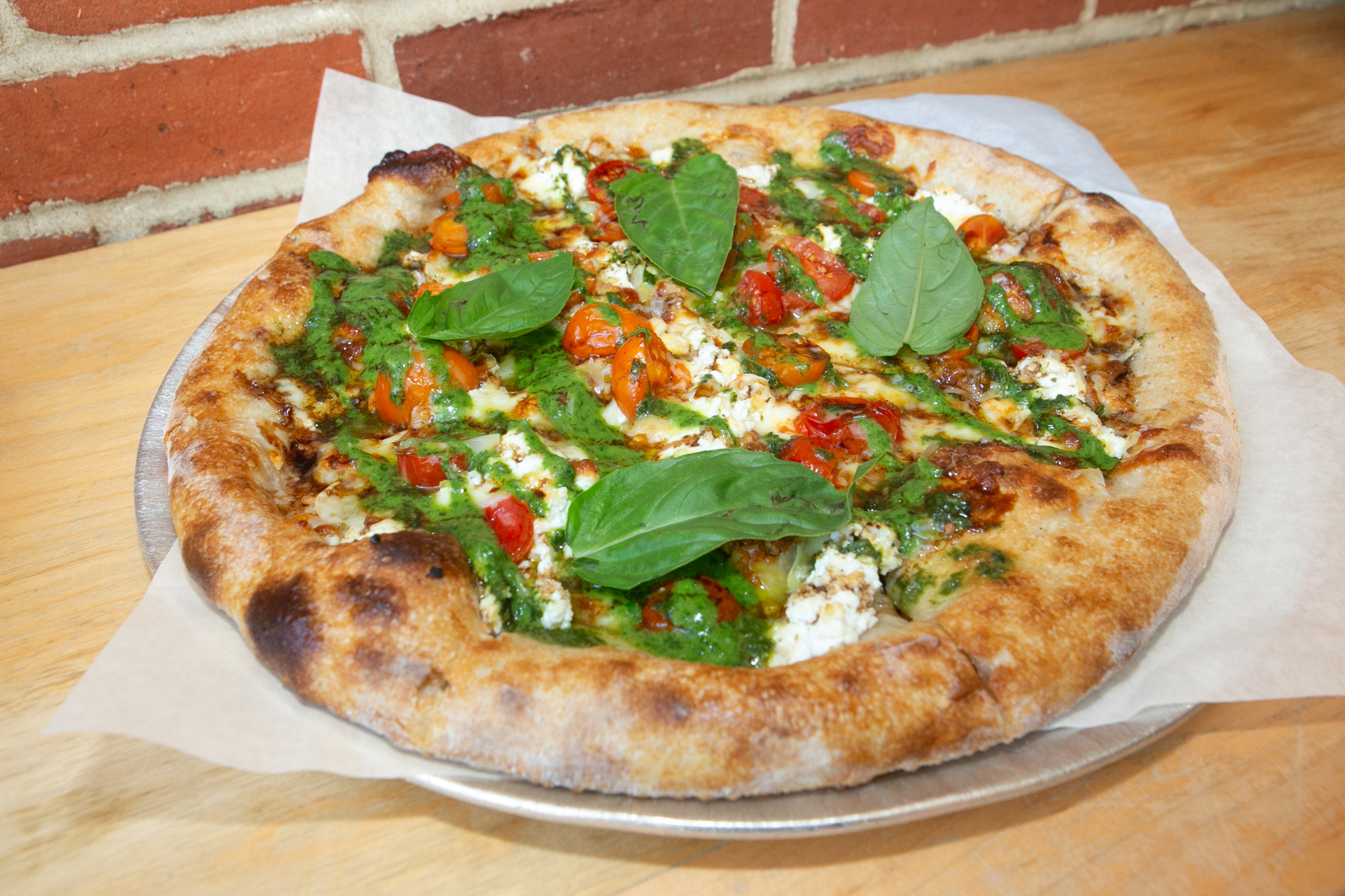
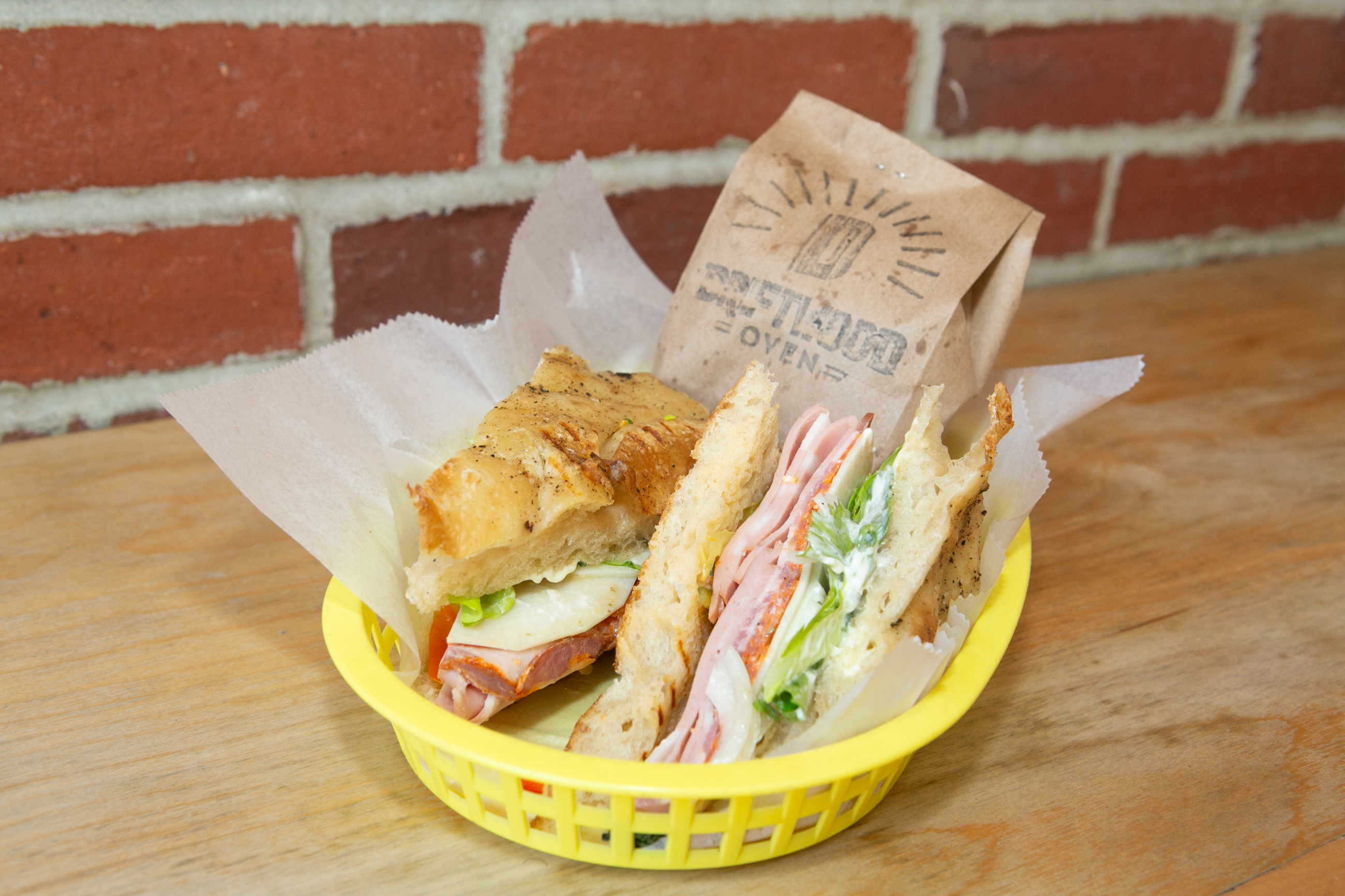
Neil Blazin first made pizza in his home oven, playing around with his sourdough starter to see if he could make something better than what was available for delivery in the bleak pizza days of 2012. Over the next few years, while working as manager of the fermentation-forward Legume in Oakland (now Butterjoint), he fermented his craft as one of Pittsburgh’s most talented bread bakers.
Things took a serious turn when he and Justin Vetter launched the first iteration of Driftwood Oven as a mobile, wood-fired oven specializing in neo-Neapolitan pizza in 2015. In 2018, they parked the range (still available for catering and special events) and moved into a permanent home on Butler Street. It landed on Bon Appetit’s 2018 50 Best New Restaurants in America list, and Blazin was listed as a James Beard Award semifinalist for Best Pastry Chef (which at the time included bread bakers) in 2020.
Things have changed over the years. Vetter left in 2021, and the dining area is smaller (look for this to change next year) and much more casual. Blazin and head baker Alaina Webber expanded the bakery side of the business significantly during the pandemic to offer a robust wholesale operation.
“We’re always in a learning and growing phase, and that’s great. We constantly look for more avenues to strengthen our skill sets. We talk about communication a lot,” Blazin says.
One thing remains consistent: Everything leavened begins with a natural sourdough starter.
OK, two things: The attention to detail in process and technique is outstanding.
There’s still some indoor bench seating, and the picnic table outside is lovely on anything but a frigid evening. Hungry eaters can pre-order online, too.
The order: Driftwood Oven’s pizza is a pinnacle of Pittsburgh. The restaurant offers 16-inch New American Baker (similar to a New York style but with a crispier crust) and 12-cut Roman style (square pizza derived from what we’d now call Sicilian style). You’ll be thrilled either way you go. My move is to get a 16-inch pie and a few cuts of Roman.
Toppings range from classic cheese, bianca and spicy sausage to now-steady hits such as Major Tom (finocchiona, morita chili oil, herbed ricotta, mozzarella, provola, fresh garlic, white wine shallot cream sauce) and Kale Raiser (bacon, white wine shallot cream sauce, lacinato kale, mozzarella, buttercup cheese, pickled red onions), as well as hyper-seasonal pies like the always anticipated summertime smash peaches and corn.
“The pizza hasn’t changed a whole lot. We’ve gotten better at making Roman doughs, and we’ve tweaked the formula just a little bit,” Blazin says.
But Driftwood Oven offers so much more than pizza. Its bagels are some of the best in town, and the pastries (which shine on weekend mornings) are equally worth the trip. Driftwood’s mixed lettuces salad may be the best salad offered at any pizzeria in Pittsburgh.
Bill Timlick, Driftwood Oven’s chef de cuisine, offers a slowly expanding menu of crushable savory dishes. Shareable snacks such as smoked paprika baba ganoush and meatballs are a gorgeous way to begin a meal, and sandwiches, including a reuben with house-made corned beef, offer an excellent alternative to pizza. And by alternative, I mean in addition to.
3615 Butler St., driftwoodoven.com
Hal B. Klein: hklein@post-gazette.com, Twitter @halbklein and IG @halbklein.


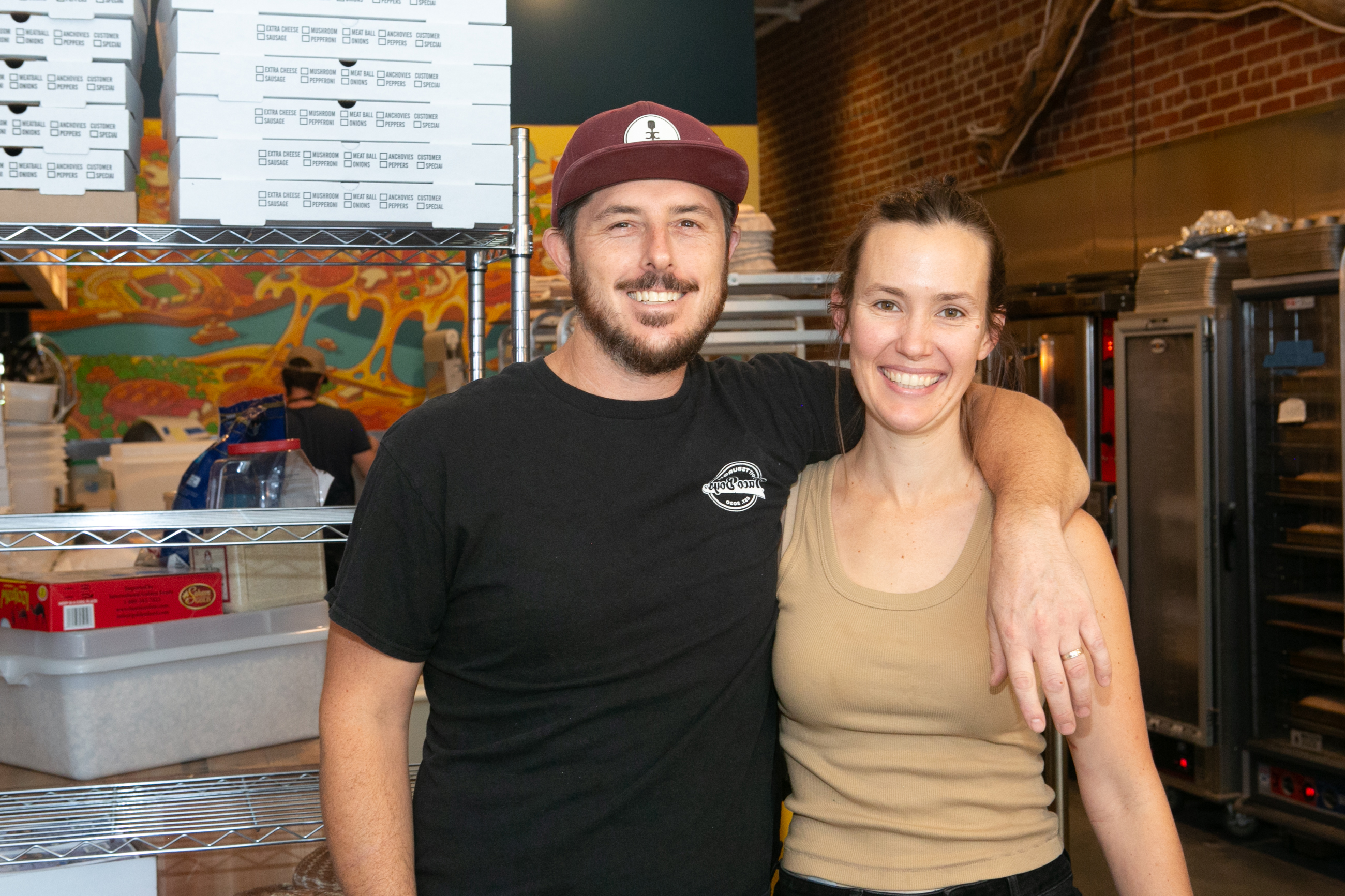
Ed Yozwick
Laura Malt Schneiderman
Advertisement
Advertisement